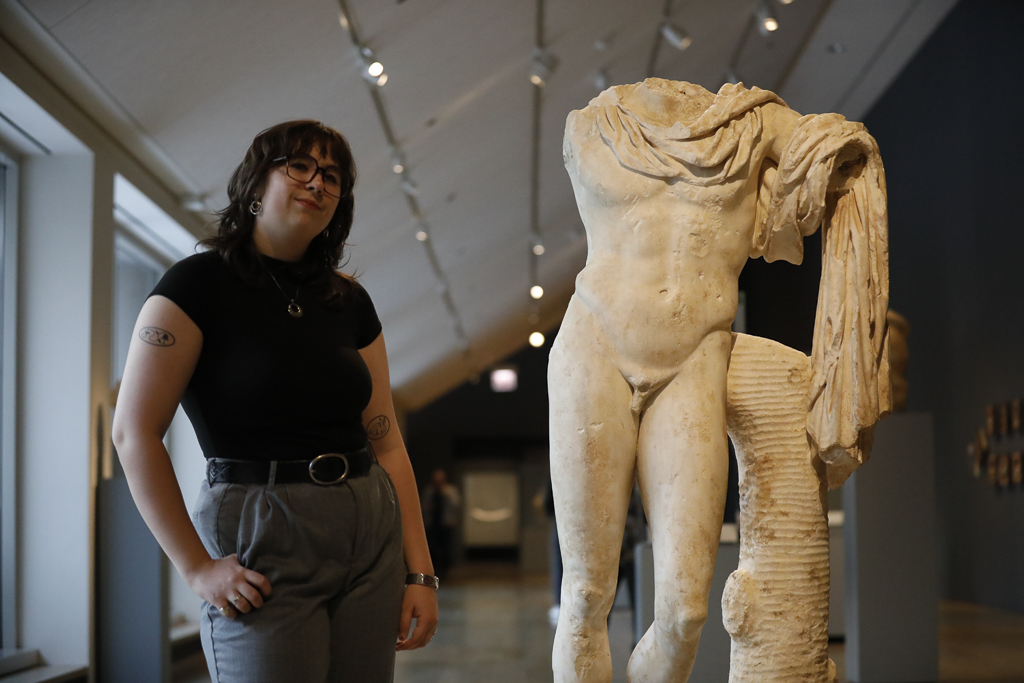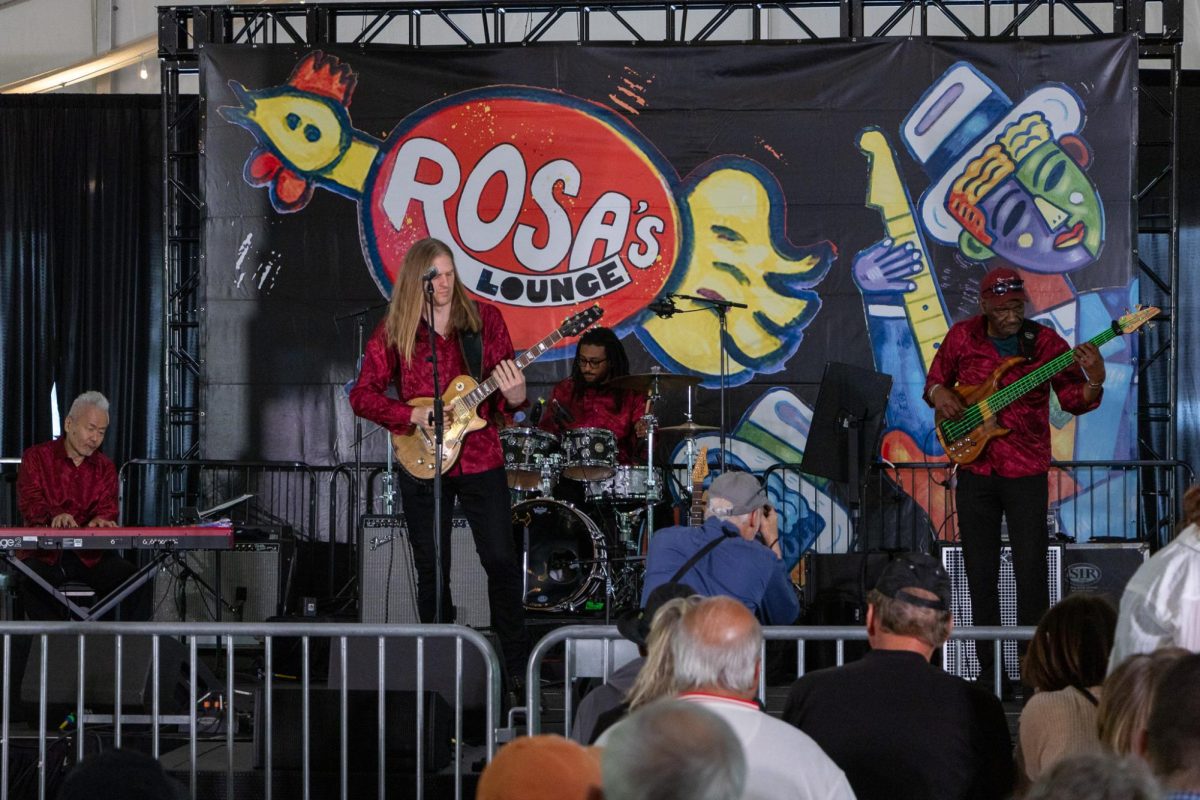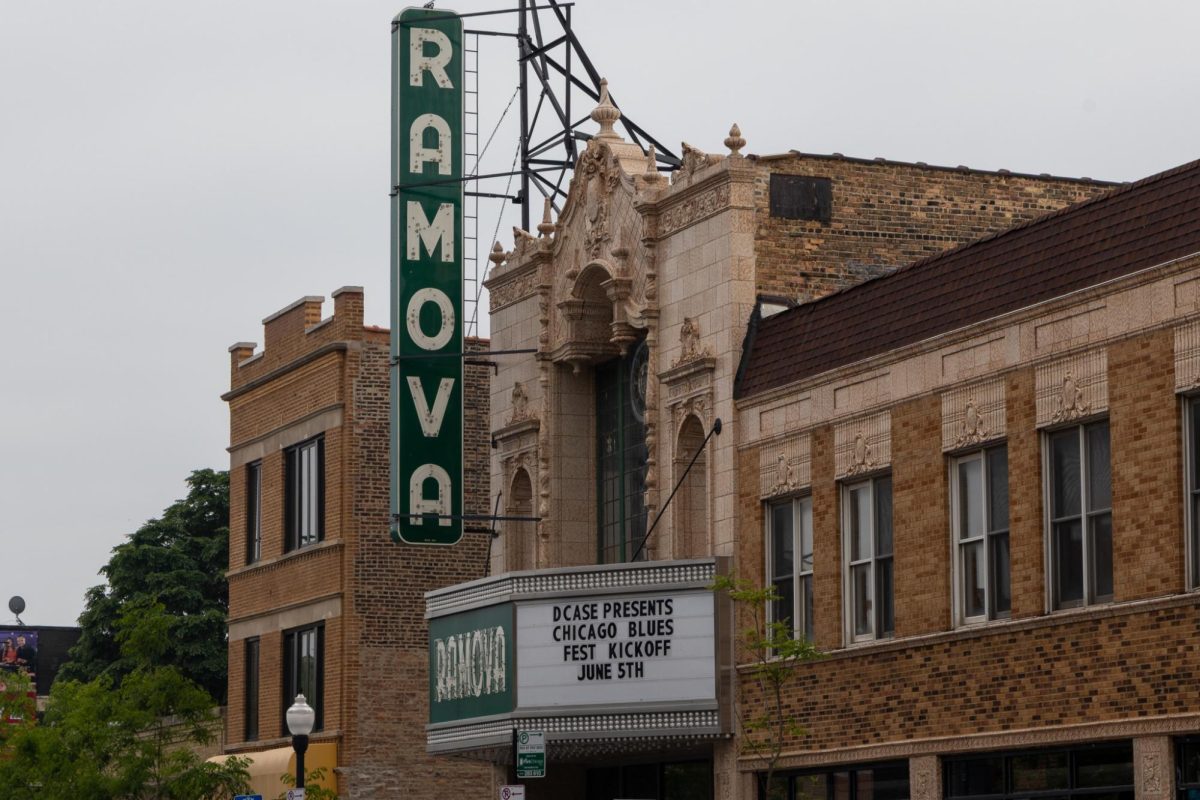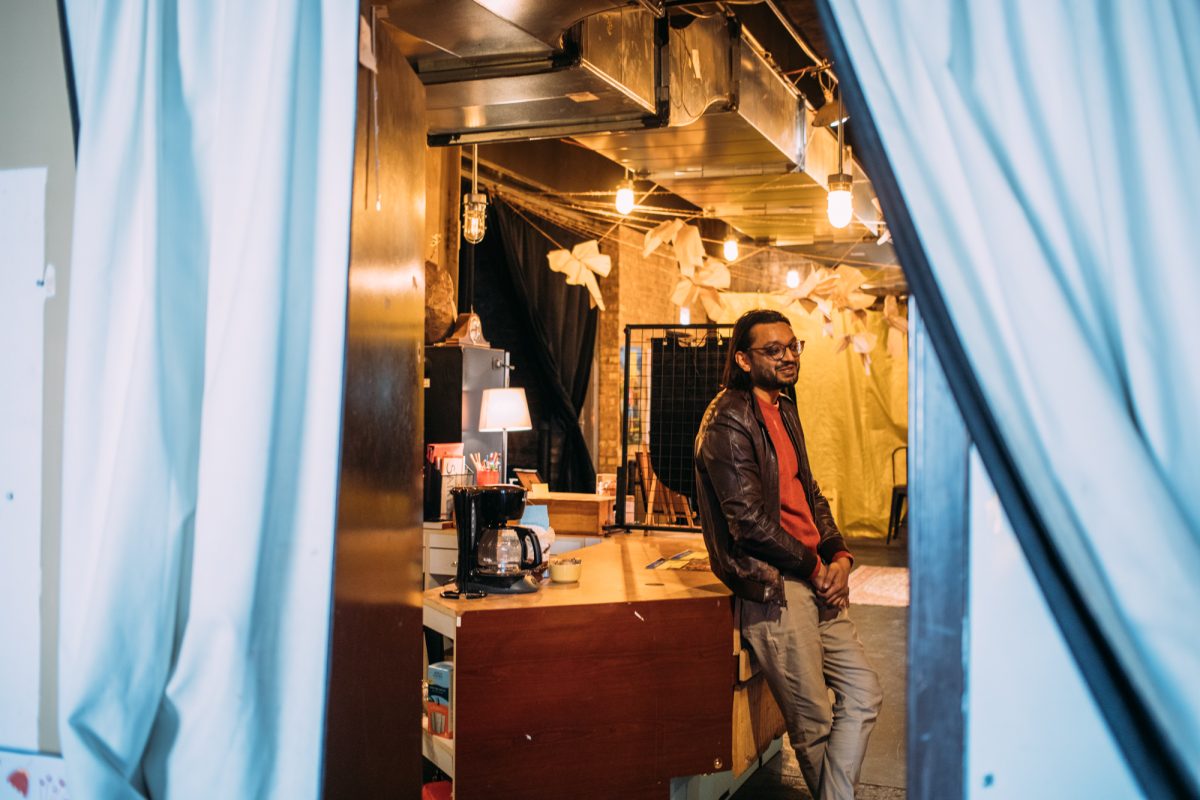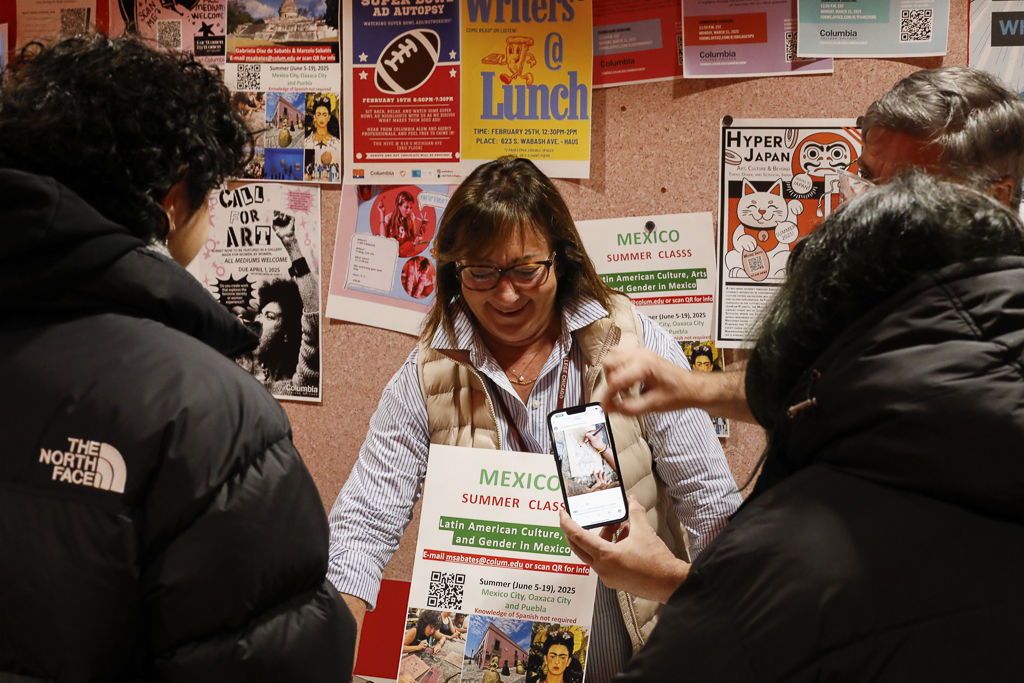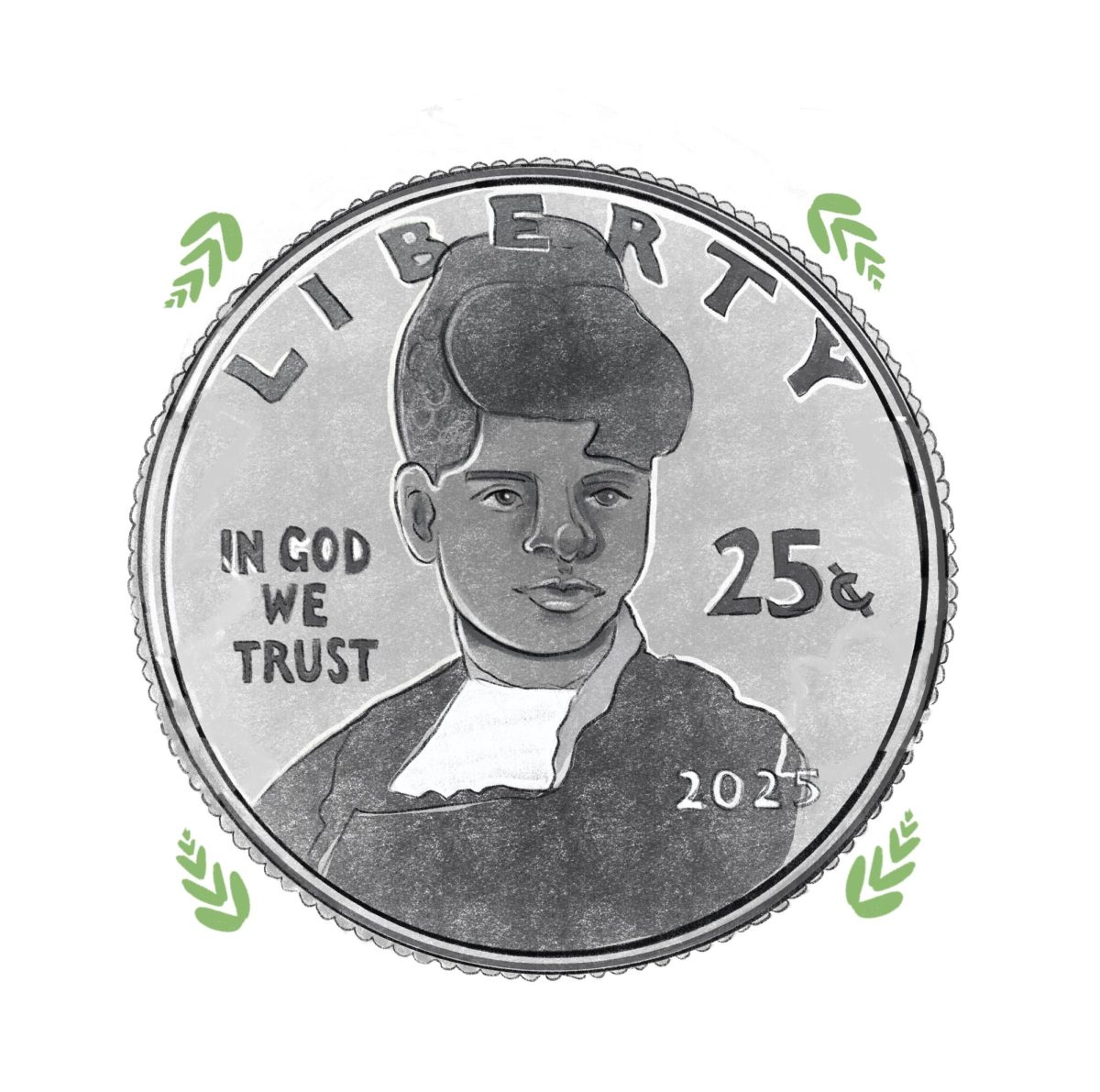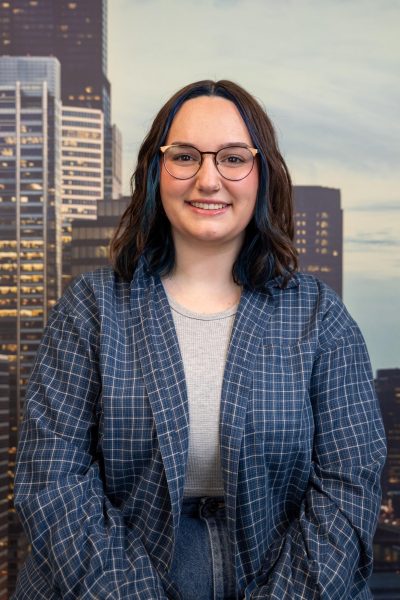Columbia’s Madison Yager, a junior double-majoring in art history and arts management, was captivated by the statue of a fragment of Venus when they first saw it in an online catalog. The piece includes only a portion of the goddess’s torso and legs, with a sheer garment pulled tightly around her hips.
As a creative individual who is passionate about the historical context of art, Yager was drawn to the stark contrast between the sculptural portrayal of women in comparison to that of men.
They were able to learn even more about gender in ancient Roman art during a 2025 J-term trip to Rome this past January that focused on immersing students in the city’s art, history and culture while also teaching about curatorial exhibition and gallery design.
It was during the trip that Associate Professor Robert Blandford, who taught the “International Cultural Heritage Management: Rome” course, approached Yager and a few other students with the idea to apply for a chance to participate in the Art Institute of Chicago’s University Partner Fest, which offers emerging scholars the rare opportunity to give a lecture on specific works of art within its galleries.
The group, which included Yager and students Xitlaly Barajas, Adilene Vega and Abigail Halla, managed to get accepted into the program despite the time crunch to submit an application. Barajas and Halla are both senior art history majors, and Vega is an art history, criticism, and conservation BFA.
They gave their lecture on color, gender and provenance in ancient Roman art at the museum. This year, 30 student presentations were happening in multiple areas around the museum as a part of the event.
While preparing for the lecture, the group began by searching for pieces at AIC’s gallery that “called to them,” and ended up finding perfect matches for each of their prospective areas of focus. The statue of a fragment of Venus became one of six statues that the group chose to evaluate during their 30-minute presentation.
Yager’s portion of the lecture was centered around the “theory of whiteness” in ancient Roman statues, which is the misconception that these works were originally made with white marble, when in reality they were often painted with vibrant colors.
According to Mark Porter, the senior exhibitions coordinator at Columbia, this was a rare chance for students that often doesn’t present itself until post-graduation. “To be at that stage while still a student, puts them ahead of the curve,” he said.
Yager said that the group looked forward to this experience because teaching others about art history would aid both their academic paths and professional careers. Additionally, they explained that for them, it was a way to show what students are capable of when given the chance.
“I definitely am so proud that we did it. We’re gonna make the most out of it with the time we have,” they said, “taking these opportunities and turning them into something special for everyone.”
Yager is currently a social media manager on campus underneath Porter and has extensive experience working at Columbia’s galleries, where they are often tasked with promoting student spaces for art and collaboration.
Most recently, Yager served as a curator for the new exhibition opening in the Hokin Gallery on Feb. 21 titled “Between Here and There” that follows the theme of transition over time.
They attribute much of their knowledge to working “hands on” with Porter, and are expecting to fill the role of assistant curator next year as a senior.
“I’m excited for that, and especially to do more of the museum work, gallery work that I’ve always wanted to do,” they said.
Yager explained that they appreciate this opportunity, because the actual art history curriculum at Columbia is “lacking” in terms of what they hope to be achieving post-graduation.
“I feel like the programs here specifically are designed to give you more of that analytical sense on art history, rather than museum or gallery work,” they said.
Yager said that this is especially frustrating as a rising senior, since attaining a career in art history is hard without much experience and the availability of jobs is constantly fluctuating.
Though disappointed, they said they are not entirely surprised by Columbia’s shortage of options since the school announced that the art history degree would be cut altogether, as previously reported by the Chronicle.
“It was completely disheartening,” Yager said. “Them getting rid of it just felt like a slap in the face.
Columbia will sunset the art history major and not admit any additional students after this semester.
The college’s Board of Trustees voted in December to eliminate or consolidate nearly half of Columbia’s programs in a historic overhaul. Some of the other programs that will sunset are cultural studies, environmental and sustainability studies and ASL-English interpretation.
Then in January, the college laid off 23 full-time faculty members from the various programs that were impacted. The provost has not ruled out additional lay-offs, as the Chronicle previously reported.
Yager said that by taking away the art history degree, it seems like Columbia is suggesting that art history doesn’t matter and isn’t worth student’s time or money.
“Having an art school, and then not having that fundamental of having an art history major. It just seems absolutely insane,” Yager said. “As much as it sucks, I feel like it is reflective of the time that we are in right now, especially in America.”
As a result of President Donald Trump’s recent executive orders targeting the arts, several museums across the country are cutting funding, dropping their DEI efforts, or closing their doors altogether.
On the contrary, Yager explained that their experience abroad was quite different. “To go to Rome where art is everywhere, and see how much care and importance and emphasis is placed on it was truly eye opening,” they said.
This is a sentiment they have carried over into other endeavours since returning, most noticeably within the Society of Art and History club. After the announcement of program cuts, Yager decided to create a space in which art history students could escape misinformation, network between grade levels and find a supportive community.
Debra Parr, an associate professor of art history and the faculty advisor to the club, helped them go through the process of re-establishment towards the beginning of this academic year. She said that she has been impressed with Yager’s work ethic and timeliness in organizing everything.
“Yager is a force of nature,” she said. “And also just making all the students feel part of it and want to be a part of it even…I just think that speaks to Yager’s capacity to form community.”
Now serving as the SAH’s president, Yager hopes that this club gives students a platform to highlight the importance of art history, even if it will only remain as a minor at Columbia.
“I feel like showing the legacy and the significance of art…and just being like, ‘we’re here to stay, even if we’re not going to have a major anymore;’ it’s like we aren’t gonna go down without a fight.”
They said that for next year, SAH is looking forward to several smaller things like campus events, club partnerships and possibly even a short trip out of state.
“It’s things like that which really keep me engaged and show me the power that Columbia does have,” Yager said. “The community that I found at Columbia, with all the passionate people, has just been so amazing.”
Copy edited by Patience Hurston
Resumen en Español:
Madison Yager, un estudiante de Columbia, dio una presentación sobre la arte antigua romana en el Art Institute of Chicago. La presentación fue sobre la idea falsa de que las esculturas antiguas eran blancas pero originalmente estaban pintadas.
Explicó que aprecio esta oportunidad porque no hay suficiente para tener experiencia para estar preparado después de la graduación. \
Adicionalmente, el estudio de Arte de Historia ya no va ser ofrecido en Columbia, debido a los recortes de varios programas.
Previamente, fue el curador para la exhibición “Between Here and There” la cual estrenó en el Hokin Gallery en febrero.
Ahora es presidente del club de Sociedad de Arte e Historia, una organización para conectar estudiantes con eventos y oportunidades del tema.
Resumen en Español por Uriel Reyes
Texto editado por Manuel Nocera


